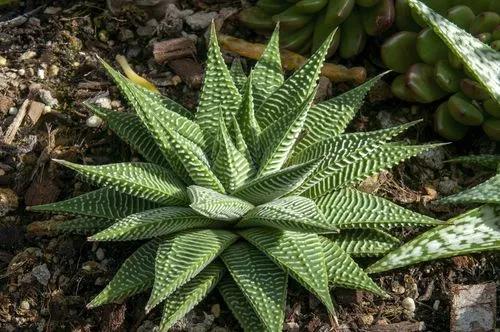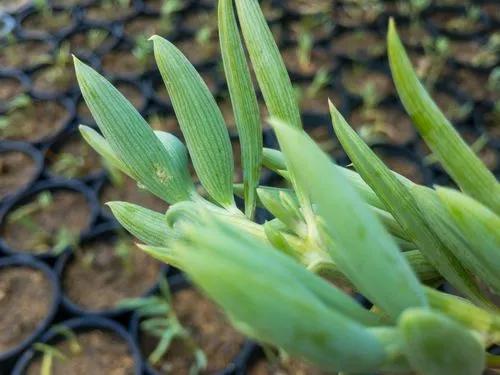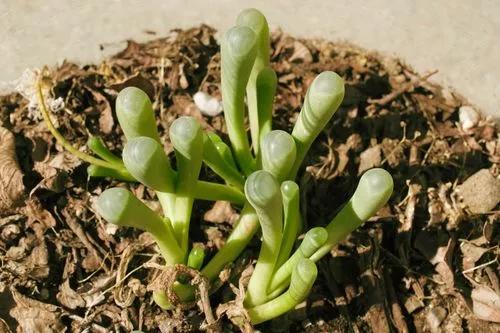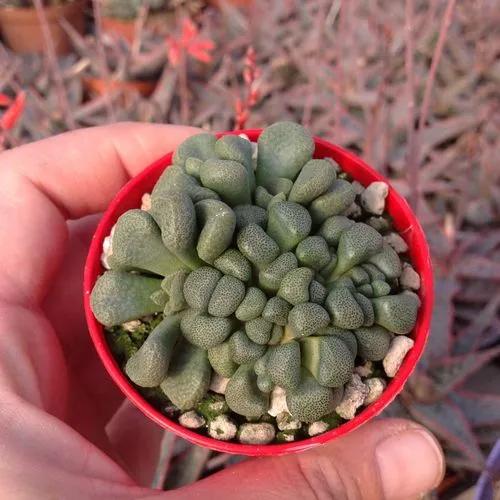The Panda plant is a fairly easy succulent plant species to care for and maintain. This native to Madagascar species from the kalanchoe genus makes a nice addition to any succulent plant collection grown indoors.
Panda Plant Care
Kalanchoe tomentosa
Other names: Pussy Ears, Chocolate Soldier



The Panda plant grows thick leaves for water storage purposes, which means less watering for the grower. These leaves are covered in tiny hairs that give the plant a velvety look and feel. The kalanchoe tomentosa grows up to approximately 1.5 ft with a thick stem that produces branches and many groups of leaves once it matures. When they're pruned well, they have a kind of tree or bush look about them and can produce branches growing below pot level (now suitable for growing in a hanging basket).
How to Care for the Plant

Water

When the top inch of the soil looks dry, it’s time to water your Panda plant. Don’t forget to empty the saucer to avoid any stagnant liquid. Water the succulent less in the cold period.

Pruning

Only occasional hygienic pruning might be necessary. Remember to use sterilized, sharp tools.

Fertilizer

Feed your Kalanchoe tomentosa from spring till the mid-summer. Use a quarter of the recommended strength and water the plant before feeding to avoid root burn. During the dormant season, which is in late summer, the Panda plant will not need any fertilizing.

Sunlight

A mixture of direct and indirect light will be great for your Panda plant. You'll notice less growth under lower light conditions, so don’t let it sit in full shade for extended periods of time.

Soil

A well-draining, lightweight cacti mix is ideal for this plant. Avoid using heavy soil because it won't allow air to get to the roots.

Propagation

Many kinds of Kalanchoe will produce tiny plantlets along the leaf margins that can be potted individually. To propagate by cuttings, sever a section of a few inches long at the beginning of the growing season and replant in warm, moist soil. Consider bagging up the cuttings to increase their chance of rooting.

Temperature

Temperatures between 60-75˚F (15-23˚C) are advised. Avoid temperatures lower than 55˚F(13˚C).

Container

There are no special requirements for the shape of the pot. Just keep in mind that it should have proper drainage holes and be about 1 in (2.5 cm) wider than the root ball to give the roots some space to grow.

Fun fact

This species is grown for its interesting furry and velvet-like leaves that look like cat ears (pussy ears is another name for this plant).

Popularity

13,786 people already have this plant 2,652 people have added this plant to their wishlists
Discover more plants with the list below
Popular articles






